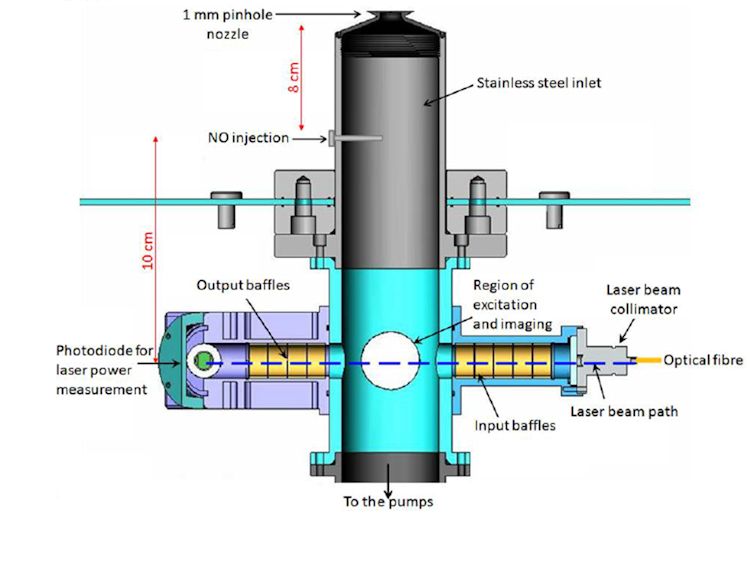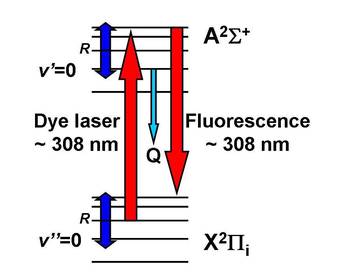The FAGE Technique
Fluorescence Assay by Gas Expansion (FAGE)
OH is present in the troposphere at extremely low concentrations, typically on the order of 1 × 106 molecule cm−3, and has a very short lifetime. Detection of this radical is therefore a great experimental challenge. The FAGE (Fluorescence Assay by Gas Expansion) technique is utilised by the University of Leeds for the task. FAGE involves low-pressure laser-induced fluorescence spectroscopy. It is a highly selective and sensitive technique, ideal for the measurement of OH in the atmosphere.


Ambient air is drawn into a detection cell at low pressure (~1 Torr) through a pinhole nozzle (~1mm diameter). A laser beam tuned to 308 nm is passed perpendicularly across the gas beam, causing on-resonance fluorescence of the OH radicals. The expansion of the sampled gas into the low pressure cell reduces collisional quenching of the excited OH radical, extending the fluorescence lifetime sufficiently to enable temporal discrimination between the laser pulse and OH fluorescence. The fluorescence is filtered and focussed onto a photomultiplier tube and analysed by photon counting. The resultant signal is converted into an OH concentration by calibration. The FAGE technique can also be used to make HO2 measurements by means of chemical conversion to OH with NO, followed by LIF detection. Current detection limits are 6 × 105 molecule cm−3 for OH and 1 × 106 molecule cm−3 for HO2. Data is taken with 30 second integration time.
The figures to the right show a diagram of the ground-based FAGE OH detection, and the fluorescence scheme used in the technique.
There are currently 5 FAGE instruments in use within the group, for laboratory and fieldwork applications. For more details please see the Fieldwork and Laboratory pages.
